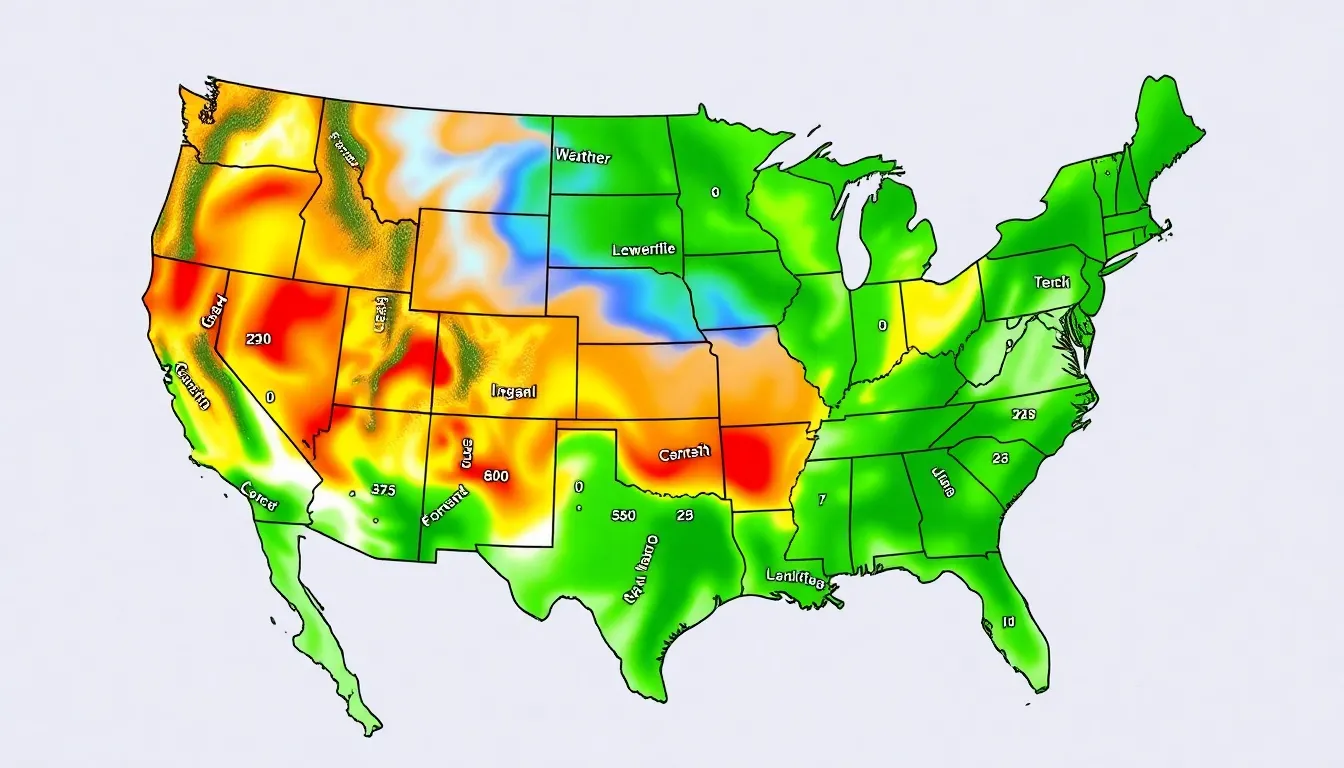As tomorrow approaches, the burning question on everyone’s mind isn’t about world peace or the latest TikTok dance—it’s about the temperature. Will it be a sun-soaked day perfect for picnics or a chilly one that’ll have folks huddling indoors? Knowing the forecast can mean the difference between a delightful day out and a soggy sock situation.
With countless weather apps and websites at our fingertips, finding out tomorrow’s temperature shouldn’t feel like searching for a needle in a haystack. Armed with the right info, one can plan a wardrobe that doesn’t scream “I’m freezing!” or “I’m sweating buckets!” Get ready to conquer the day with confidence as we dive into the forecast and help you prepare for whatever Mother Nature has in store.
Table of Contents
ToggleOverview of Weather Forecasting
Weather forecasting relies on a combination of satellite data, weather stations, and computer models to predict future conditions. Forecasters analyze atmospheric patterns, providing insights into temperature changes and precipitation probabilities. Accurate forecasts enhance daily planning for individuals and businesses alike.
Meteorologists utilize advanced technology to interpret data collected from various sources. These sources include ground-based sensors, weather balloons, and radar systems. By integrating this data, they can generate reliable short-term predictions.
Short-term forecasts typically cover a 24 to 48-hour period, focusing on immediate weather conditions. For instance, knowing tomorrow’s temperature can help people decide on clothing and outdoor activities. The process involves assessing current weather trends and projecting them into the near future.
Long-term forecasting, on the other hand, looks at broader patterns that may span weeks or months. Seasonal forecasts can indicate trends such as warmer winters or wetter conditions during specific months. These predictability models assist in agricultural planning and disaster preparedness.
Mobile apps have made checking forecasts more convenient than ever. Users can receive real-time updates about changing conditions in their area. Many apps also provide radar imagery, detailed hourly forecasts, and severe weather alerts.
Commitment to accuracy remains crucial in weather forecasting. Continuous advancements in technology enhance predictive capabilities, leading to improved outcomes. Regularly updated information ensures that users stay informed about tomorrow’s temperature and related weather conditions.
Understanding Temperature Predictions

Temperature predictions involve various scientific methods and observations. Understanding these factors helps individuals prepare for their days effectively.
Factors Influencing Temperature
Weather conditions depend on multiple factors that impact temperature at any given time. Atmospheric pressure plays a significant role in determining how warm or cool it feels. Elevation affects temperature as higher altitudes generally lead to cooler air. Nearby bodies of water influence temperature too, often moderating extremes due to their heat capacity. Additionally, surrounding vegetation impacts local climate, as forests can provide shade and reduce heat during summer months. Urban areas experience the heat island effect, causing them to feel warmer than surrounding regions. Collectively, these factors contribute to daily temperature variations.
The Importance of Accurate Forecasts
Accurate weather forecasts serve essential functions for daily planning. Meteorologists analyze satellite data and computer models to predict temperature changes reliably. When forecasts are precise, individuals can make informed decisions regarding clothing, outdoor activities, and travel plans. Businesses also benefit from accurate temperature predictions, allowing for better logistics and staffing. Over time, improvements in data collection techniques have enhanced forecast accuracy significantly. Monitoring conditions in real-time supports timely updates, helping everyone stay prepared for unexpected weather shifts.
How to Check Tomorrow’s Temperature
Checking tomorrow’s temperature involves various reliable sources that provide accurate forecasts.
Online Weather Services
Numerous online weather services offer comprehensive forecasts. Websites such as Weather.com or AccuWeather present detailed temperature readings and related weather conditions. Users can access real-time data, including hourly forecasts and animated radar maps. Searching for local weather reports yields specific information tailored to geographic areas. Most platforms also provide extended forecasts, enabling users to plan for multiple days ahead. Reviewing user-generated content may reveal personal experiences that enhance understanding of weather patterns.
Mobile Apps for Weather Updates
Mobile apps have revolutionized how individuals check the weather each day. Popular options like The Weather Channel and NOAA Weather Radar offer easy-to-navigate interfaces. These apps deliver not only temperature updates but also alerts for severe weather, helping users stay informed. Custom notifications for specific locations allow individuals to receive updates tailored to their needs. Integrating radar imagery within many apps provides additional context for expected weather changes. These advancements ensure individuals can plan outdoor activities effectively, no matter the forecast.
Common Misconceptions About Temperature Forecasts
Many people believe that temperature forecasts are inherently accurate, but this isn’t always the case. Forecasts often vary based on the source due to different data interpretations. A common misunderstanding involves interpreting temperature as a singular number when, in reality, it’s often expressed as a range for a reason.
Another misconception pertains to the belief that the weather will match the forecast precisely. In practice, weather conditions can shift rapidly, leading to unexpected changes. It’s also important to recognize that localized weather patterns might not align perfectly with broader forecasts, affecting specific areas differently.
Some assume that online apps provide the same information as local news weather reports. In truth, many apps rely on real-time data and might reflect conditions more dynamically than traditional broadcasts. Additionally, many people underestimate the influence of factors like elevation or proximity to water bodies on local temperatures. These elements significantly affect the actual temperature experienced in a specific location.
Another point worth considering is that temperature forecasts might not account for wind chill or humidity effects. Understanding how these factors influence perceived temperature can help individuals dress appropriately.
Many individuals might expect that the app on their phone will always offer the latest updates. However, not all sources update information in real time, leading to possible discrepancies. A credible source, such as national weather services, often provides the most accurate forecasts.
Relying solely on one source can lead to misunderstanding. Checking multiple sources can enhance the accuracy of temperature assessments. Real-time data is increasingly available, making it essential to stay informed about potential shifts.
Staying informed about tomorrow’s temperature is essential for effective planning. With the right tools and resources individuals can easily access accurate forecasts that help them make informed decisions. Whether it’s choosing the right outfit or planning outdoor activities understanding the upcoming weather can enhance daily experiences.
Utilizing reliable weather apps and websites ensures that users receive up-to-date information tailored to their specific locations. By checking multiple sources and being aware of localized variations individuals can prepare for whatever the weather may bring. Embracing advancements in technology and data collection continues to improve forecast accuracy making it easier for everyone to stay ahead of the weather.



